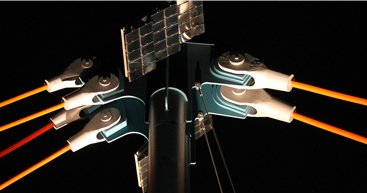
Data and Network Cabling- Planning for the Future
Data and Network Cabling
Businesses use network cables to transfer data between computers, storage areas, routers, and switches. To maximize performance, companies must carefully consider their network cabling infrastructure.
Planning for the Future
When it comes to network cabling, simply implementing cabling that is sufficient to meet current needs is not enough. Businesses should start by installing excess cabling to increase the likelihood that there will be enough in the future after the business has experienced growth. The same concept applies to the quality of cabling technology. A network’s strength will lie in its weakest component; therefore, cabling and components should also be advanced enough to meet the firm’s current needs and also modern enough to allow room for growth as technology improves. The speed and functionality of copper and fiber have improved beyond expectations over the years. As a result, businesses must constantly plan their data infrastructure in such a way that enables it to keep up with technological improvement, which sometimes exceeds even the highest expectations.
Choosing the Right Network Cabling
The process of deciding on the most suitable cabling product will depend heavily on data capacity. When businesses find that they need to upgrade their cabling infrastructure, it is normally due to the fact that their existing network has become weighed down. Signs that indicate an office’s cabling may be overwhelmed and need an upgrade include a noticeable increase in lag time and the appearance of more network errors. Furthermore, a company that has not upgraded its infrastructure in 10 years or more despite increasing voice and data traffic will also likely benefit from upgrading its cabling. When weighing the available cabling options a company should consider several factors. First, it is helpful to envision the company’s current data usage and compare it to what the projected network needs will be five years in the future. The business should also consider the types of equipment it will use and where the equipment will be stored. Businesses that are located in certain types of buildings should also be aware that plenum-rated cable may now be required by law. Moreover, the current need for an upgrade should be viewed as an opportunity to plan for future cabling and equipment needs.
While choosing cabling may seem straightforward, companies may potentially run the risk of underestimating what their needs will be in the not-so-distant future. However, by approaching the task of implementing a new cabling network similar to how cities approach the installation of a new highway, businesses can build an infrastructure that will allow data to be transferred smoothly at the present time in addition to having the ability to accommodate future growth that might otherwise lead to inefficiency and frustration.


